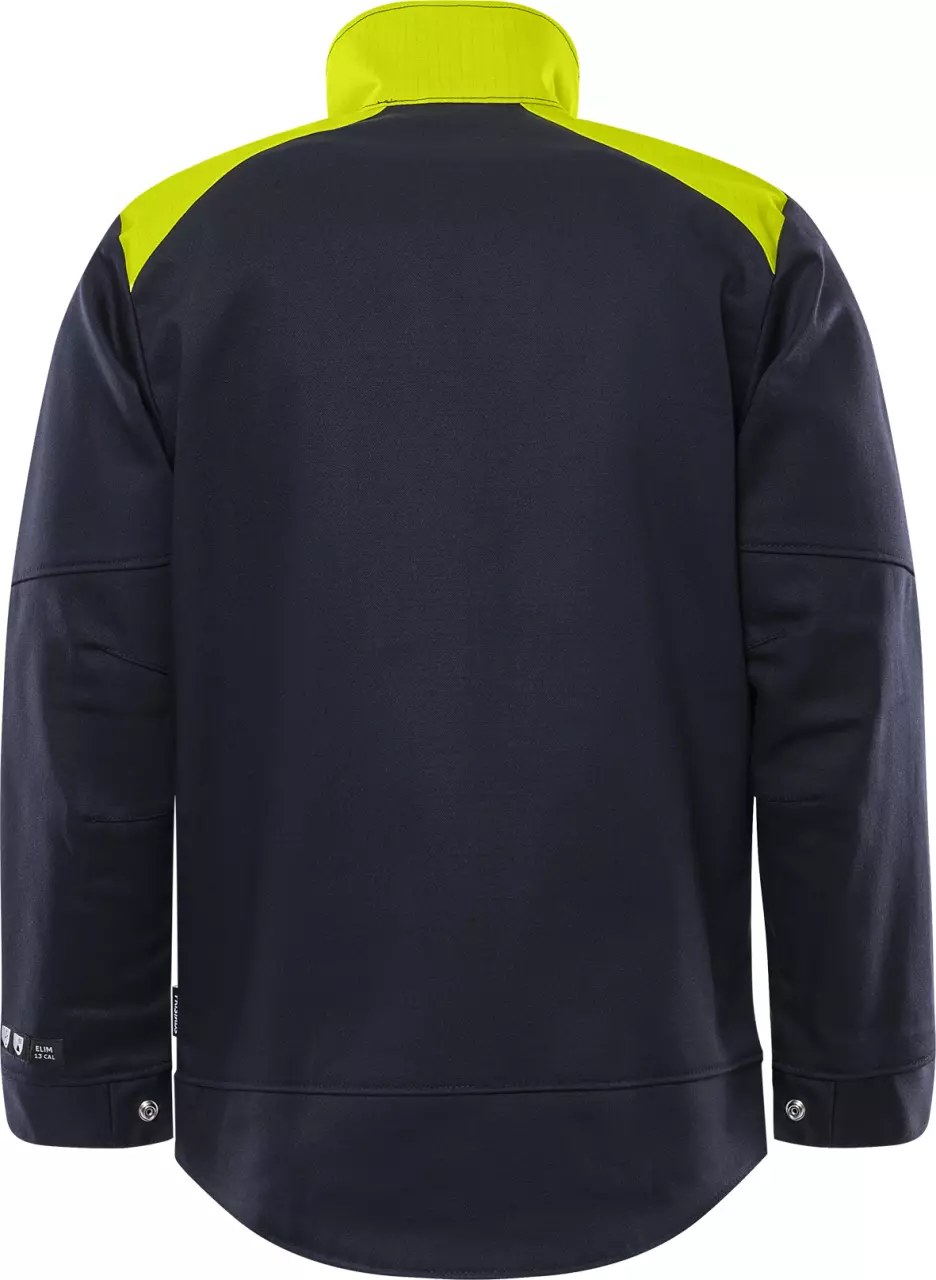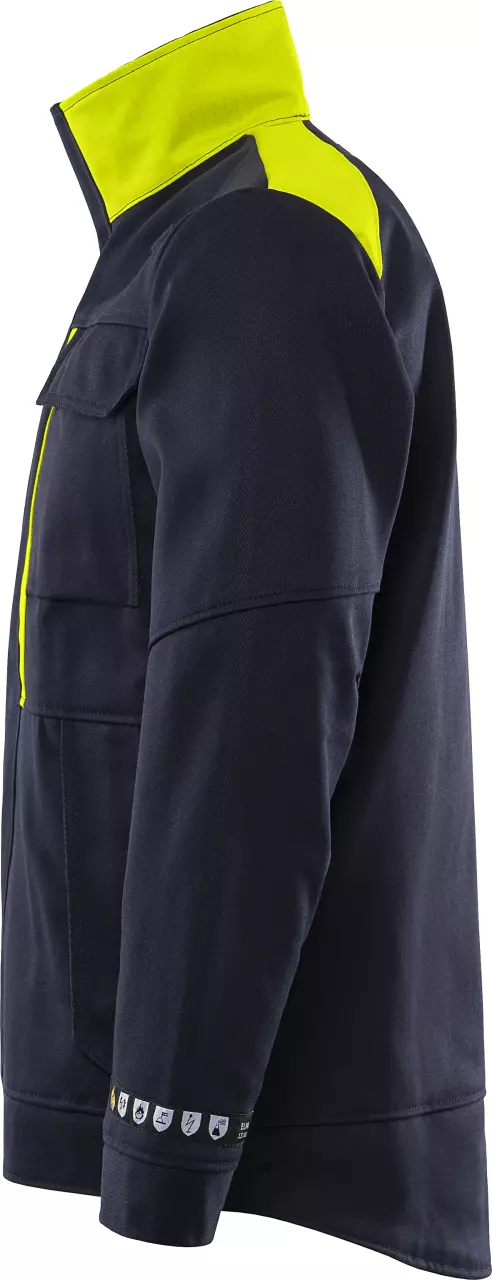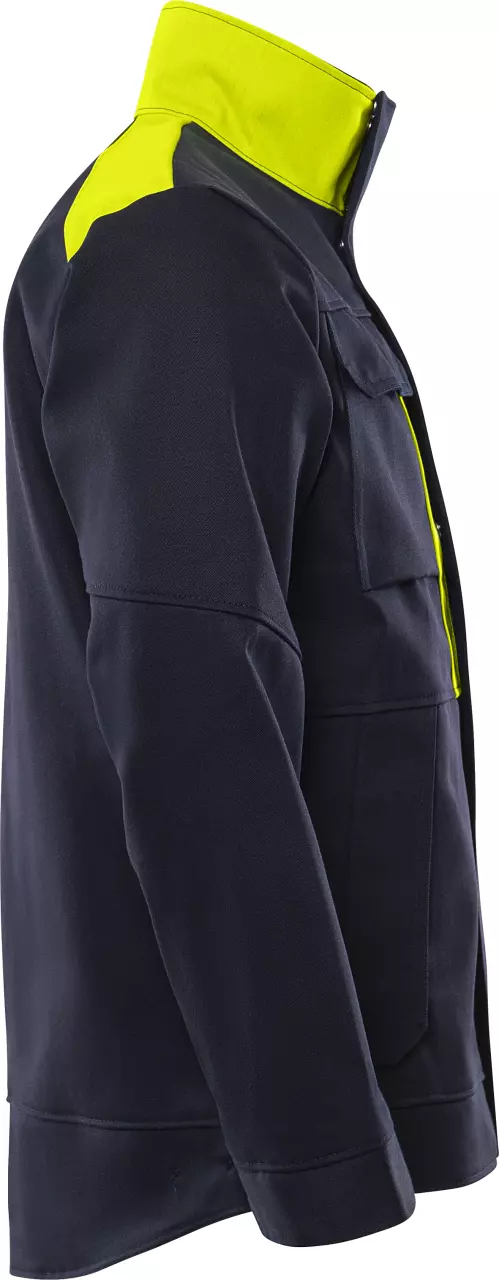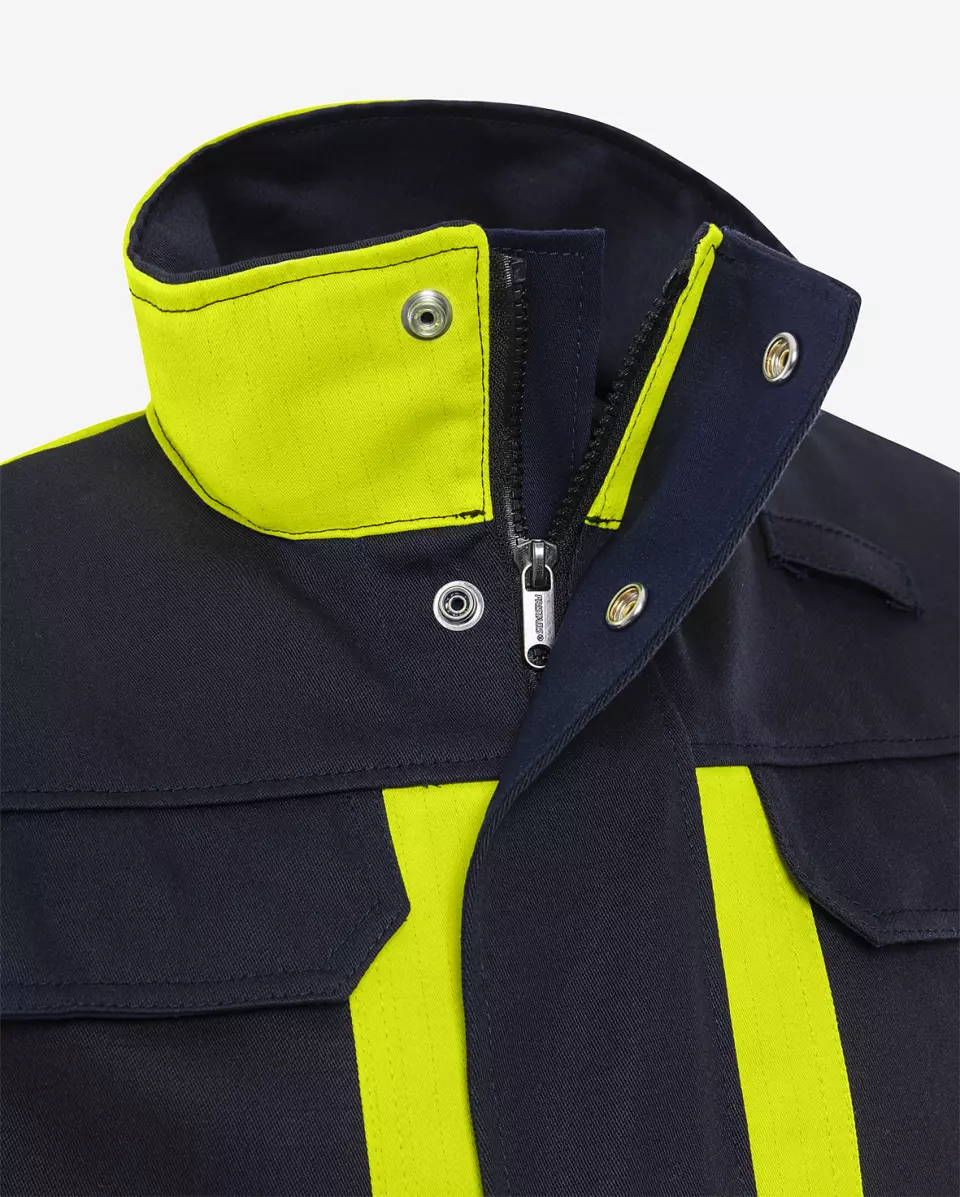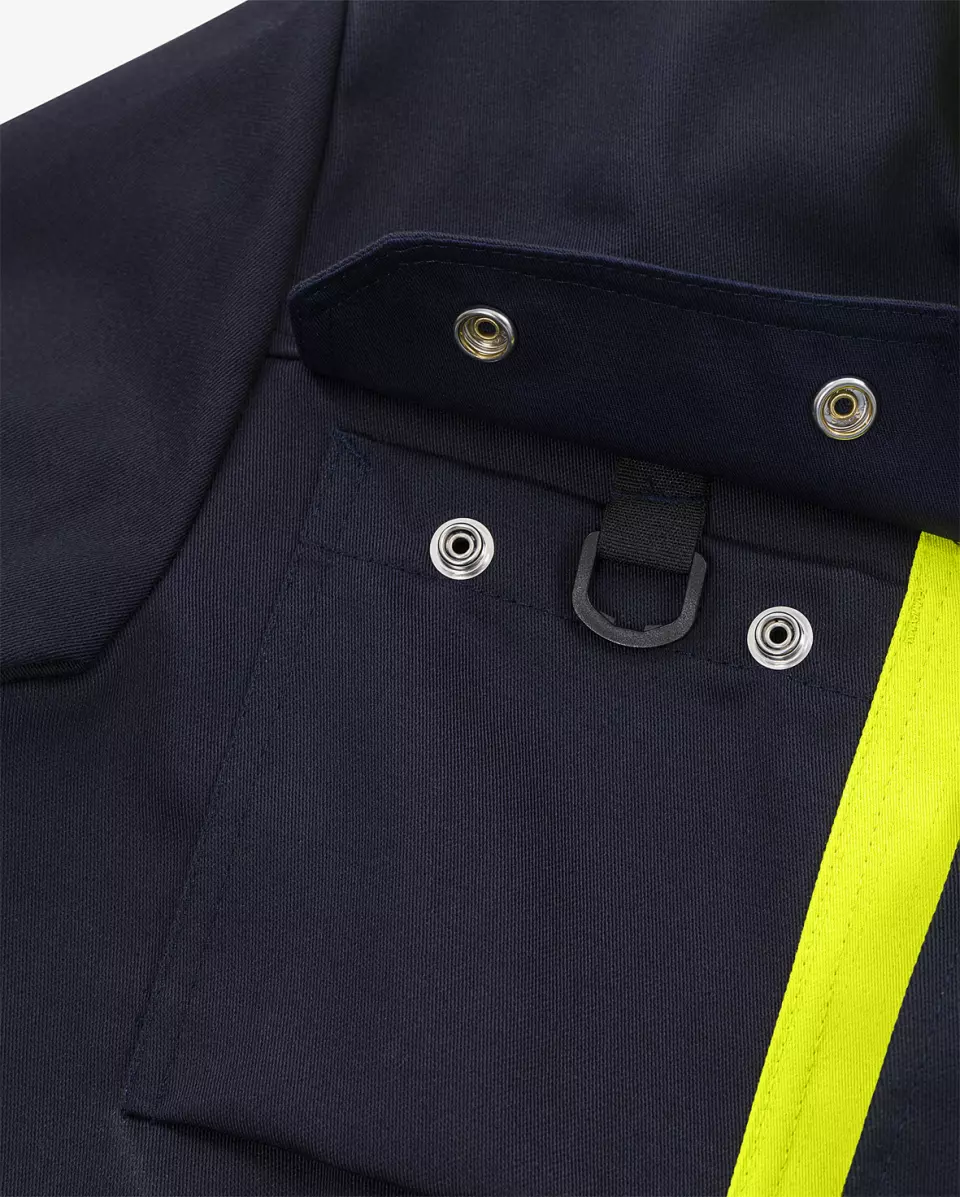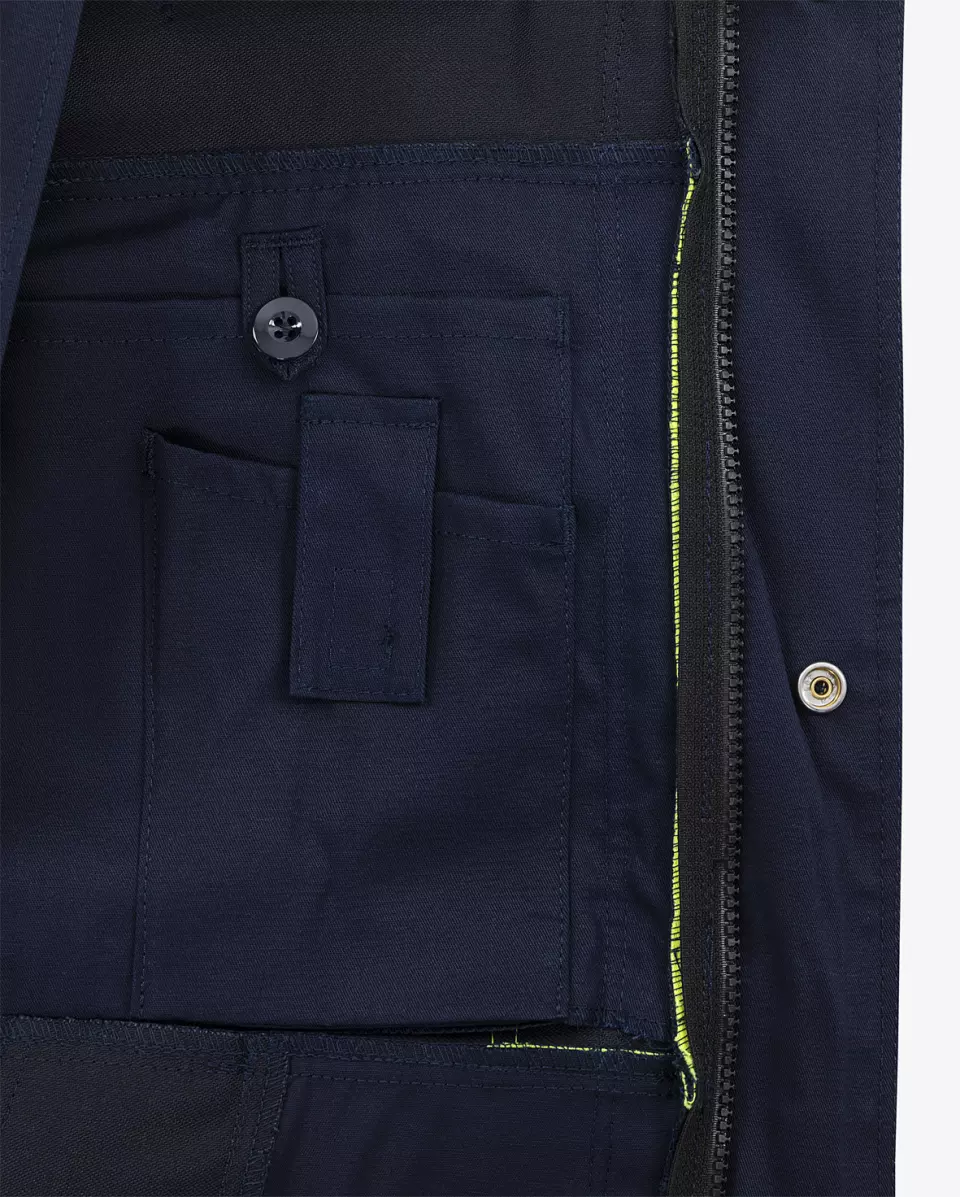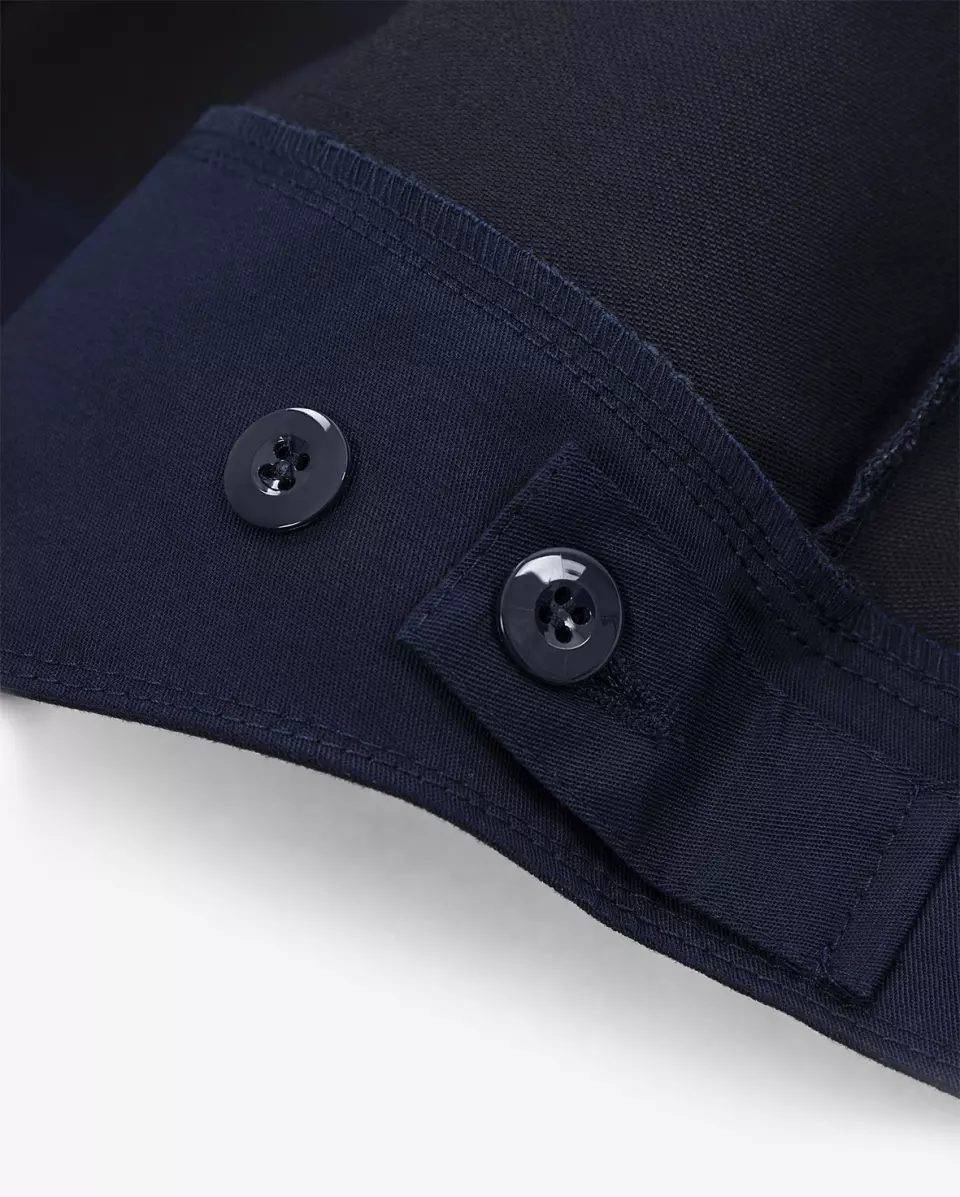Fristads Welder Jacket 4077 WEL
Fristads GmbH
visit storeProduct description
Product Features:
- Concealed zipper with press stud placket up to upper collar edge
- 2 chest pockets with flaps and concealed press stud closure, 1 with internal D-ring
- Inside pocket with button and mobile phone pocket with velcro closure
- 2 front pockets with flap and concealed press stud closure
- Adjustable sleeve cuffs with press studs
- Waist adjustable with buttons
- Extended back section
Technical Specifications:
- Certified according to EN 61482-1-2 APC 1
- EN 61482-1-1 ATPV: 19 cal/cm², ELIM: 13 cal/cm²
- EN ISO 11612 A1 A2 B1 C1 E3 F1
- EN ISO 11611 A1, A2 Class 2
- EN 1149-5
- EN 13034 Type PB (6)
- Approved for 50 washes
- Suitable for industrial laundering according to ISO 15797
- OEKO-TEX® certified
The mechanism that secures the garment, affecting ease of use, security, and functionality. Different styles offer varying levels of quick access and durability.
Defines the neck area design that affects weather protection, comfort, and compatibility with safety equipment like helmets and other PPE.
Measured in grams per square meter (g/m²), indicating fabric density and durability. Higher numbers mean heavier, more protective materials for demanding environments.
Provides secure, concealed storage inside the garment. Ideal for protecting valuables and personal items from the elements and potential loss.
Designed for secure phone storage and easy access. Keeps devices protected and readily available on the job. Ideal for convenience and efficiency.
Defines the jacket's structural design, such as hooded, parka, or bomber, affecting weather protection, visibility, and functionality for specific work environments.
Indicates whether the jacket is designed for men's, women's, kids', or universal body types, ensuring proper fit, comfort, and range of motion.
Describes how the jacket sits on the body, affecting comfort, mobility, and layering options. Choose loose for maximum freedom, regular for balanced wear, or slim for a closer fit.
Defines how sleeve ends are finished and secured at the wrist, affecting weather protection, comfort, and compatibility with work gloves.
- Electrical Protection
- Welding
- Machine Washable
- Arc Flash Resistance
- Chemical Resistance
- Heat & Flame Resistance
- High Visibility
Request a free sample
Test first and buy later. Visit any product page to request your free sample.
Standards and labels
EN 13034:2005 is a European standard that outlines the requirements and test methods for Type 6 protective clothing designed to provide protection against liquid chemical hazards. It specifies criteria for the fabric's resistance to penetration by liquid chemicals and establishes guidelines for the overall design and construction of the garments. The amendment A1:2009 introduces updates and refinements to enhance the performance and reliability of Type 6 protective clothing, ensuring improved protection for workers exposed to liquid chemical splashes and sprays. These standards are essential in industries where workers are at risk of encountering liquid chemical hazards, ensuring their safety and well-being.
Test results
Liquid Chemical Protection Type 6 PBEN 13034:2005+A1:2009 specifies the performance requirements for protective clothing that offers limited protection against liquid chemicals, identified specifically as Type 6 PB (partial body protection). The 'Type 6 PB' designation implies that the protective garment has been tested and confirmed to provide effective defense against light spray and minor splashes of liquid chemicals, but only for parts of the body such as aprons, sleeves, or boots rather than full body suits. This standard tests the fabric's barrier effectiveness by applying a defined volume of liquid to the garment and assessing any penetration or repellence under controlled laboratory conditions. Garments achieving Type 6 PB classification are crucial for tasks in industries like chemical processing or handling where full body coverage is unnecessary, thereby offering flexibility and targeted protection, reducing the risk of chemical exposure to critical areas of the body.
EN 1149-5:2018 is a European standard that specifies the requirements for electrostatic dissipative (ESD) gloves. This standard defines performance requirements for material, design, and testing of ESD gloves. The gloves must be able to effectively discharge static electricity and protect the wearer from ESD. Testing includes measuring the surface resistance of the glove material and electrical resistance of the glove. Pass/fail results are based on the gloves meeting or not meeting the specified requirements.
Test results
Material Performance TestedThe standard EN 1149-5:2018 pertains to the performance of materials with regard to their electrostatic properties, specifically testing for the charge decay characteristics. The test result Tested signifies that the material has been evaluated according to the specified methods and met the defined criteria for electrostatic properties under this standard. To determine this result, a set of specific test methods is deployed to assess the decay of electrostatic charge from the surface of the material. The test involves subjecting the material to an electrostatic charge and then measuring the rate and manner in which this charge dissipates. This ensures that materials such as those used in protective clothing are safe for use in environments where electrostatic discharge could pose a hazard, such as in certain industrial or medical settings where flammable substances are present. For procurement professionals, understanding that a product has been tested and meets EN 1149-5:2018 standards is crucial as it ensures the product's safety and suitability in environments susceptible to electrostatic risks.
EN 11612:2015 is a European standard that specifies the requirements for protective clothing against heat and flame. This standard defines performance requirements for material, design, and testing of clothing that protects the wearer from heat and flames. Testing includes measuring the clothing's resistance to heat and flame, as well as its ability to self-extinguish. Pass/fail results are based on the clothing meeting or not meeting the specified requirements.
EN 11611:2015 is a European standard that specifies the requirements for protective clothing for use in welding and allied processes. This standard defines performance requirements for material, design, and testing of clothing that protects the wearer from heat and flames. Testing includes measuring the clothing's resistance to heat and flame, as well as its ability to self-extinguish. Pass/fail results are based on the clothing meeting or not meeting the specified requirements.
Test results
Welding Protection Class 2The EN 11611:2015 standard specifies safety requirements for protective clothing used during welding and allied processes. Class 2 under this standard, which indicates a result of Visible: 85% - 100%, means that the protective clothing offers a high level of protection, effectively blocking the majority of hazardous exposure associated with welding activities. Specifically, this class is designed for use in environments where hazards are more severe or exposure levels are significantly higher. The test method for determining this classification involves subjecting the fabric and design of the protective clothing to a series of tests that simulate the conditions and hazards typically encountered in welding operations, such as exposure to radiant heat, sparks, and spatter from the welding process. The practical implication for procurement professionals is that Class 2 garments complying with EN 11611:2015 are suitable for high-risk welding tasks, providing more robust protection to the wearer under more intense working conditions.
EN 13688:2013 is a European standard that specifies the performance requirements for protective clothing. The standard includes requirements for safety, comfort, and durability, as well as tests for determining these properties. Protective clothing includes items like coveralls, aprons, and gloves that are worn to protect the wearer from hazards. Possible test results include resistance to chemicals, heat, abrasion and tearing, as well as breathability and comfort. The clothing can be tested under different conditions to check if it meets the standard's requirements.
Oeko-Tex Standard 100 is a product certification program for textiles, which is awarded by the Oeko-Tex Association. This program verifies that the textile products are free from harmful chemicals. To be able to use the Oeko-Tex Standard 100 label, a product must meet certain requirements set by the Oeko-Tex Association which include limits on the levels of harmful substances such as pesticides, heavy metals, and formaldehyde. The textile products are inspected and certified by Oeko-Tex, they can use the Oeko-Tex Standard 100 label on their packaging to show that they are free from harmful chemicals. This certification is for all types of textiles, from raw materials to finished products, and it is globally recognized.
Fristads GmbH delivery terms
Free delivery for all Fristads GmbH products
156,46 €
Free delivery
Sold in units of one piece
Need larger quantities?
Other products you may like
Recently viewed
Need help?
Get help from our experts
Other products you may like
Similar products you may like
Recommended for you
Fristads GmbH
Delivery time: 3 business days
Supplier shipping fee 6,68 €
Free shipping on orders over 150,00 €



Find +150,000 products from hundreds of brands
Autonomous sourcing platform
The most efficient way to source and order supplies for your operations
Sourcing
Ordering
List products you’re looking for and we’ll find the best products and prices for you – all for free.
Need help?
Get help from our experts

